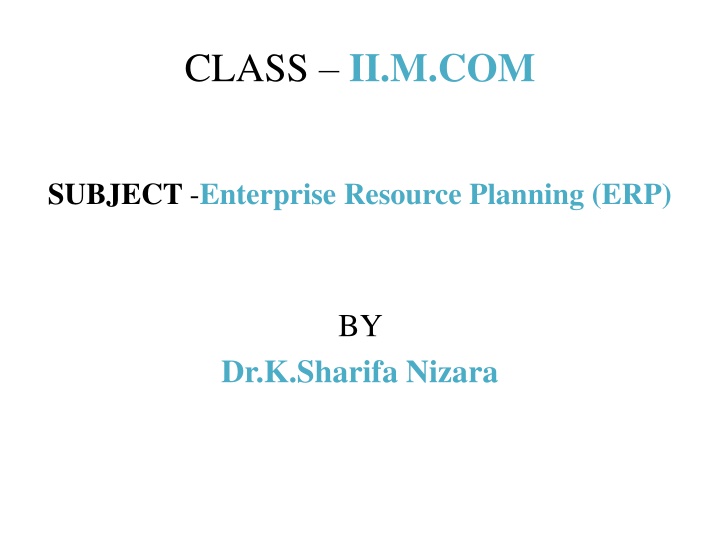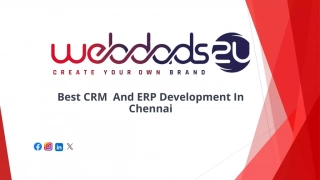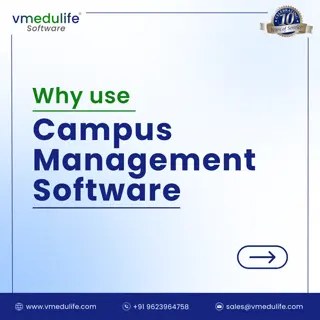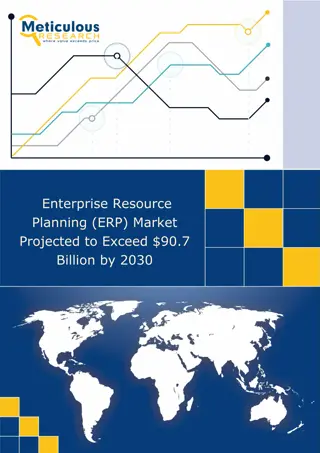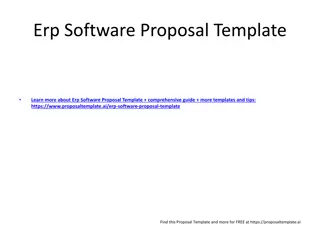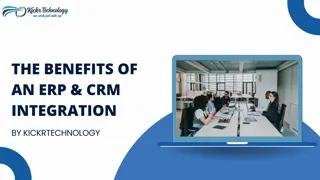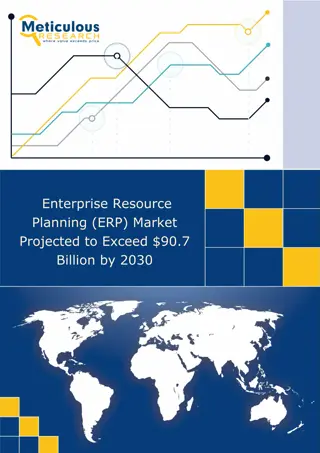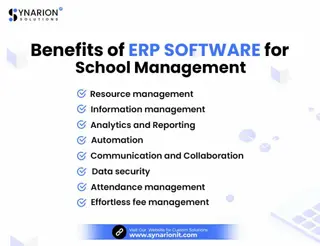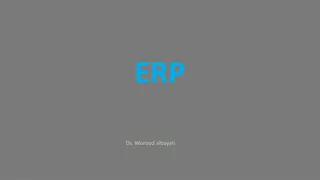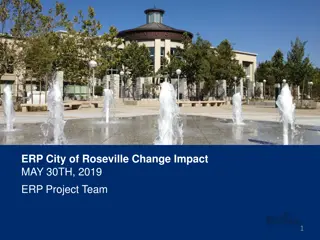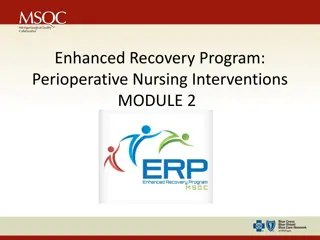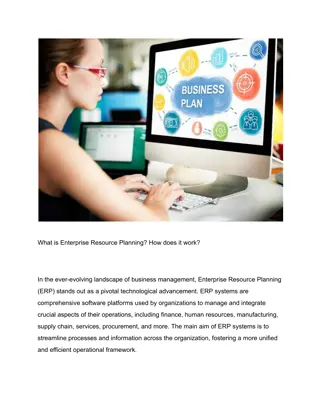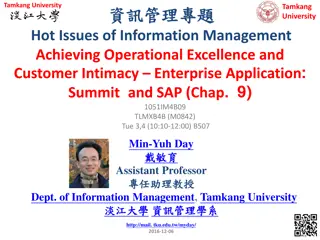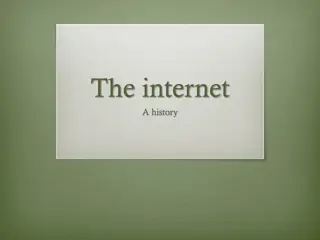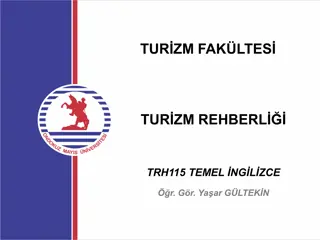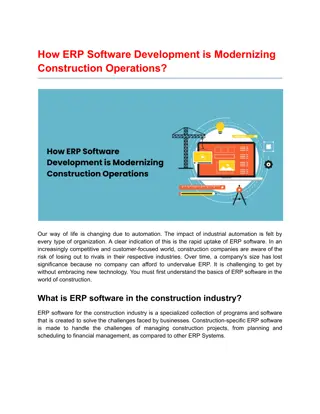Evolution of Enterprise Resource Planning (ERP) From the 1990s to Present
Enterprise Resource Planning (ERP) software has revolutionized how organizations manage their core processes. Originally developed in the 1990s, ERP systems have evolved over the years to automate and simplify various activities in a business, from accounting to supply chain operations. Choosing the right ERP software is crucial for enhancing business performance, reducing costs, and improving customer relationships. The implementation of ERP helps business owners gain maximum profit at an affordable cost by providing real-time access to resource performance. The history of ERP dates back to the early 20th century, with pioneers like Ford Whitman Harris and Toolmaker Black and Decker contributing to its development.
Download Presentation

Please find below an Image/Link to download the presentation.
The content on the website is provided AS IS for your information and personal use only. It may not be sold, licensed, or shared on other websites without obtaining consent from the author.If you encounter any issues during the download, it is possible that the publisher has removed the file from their server.
You are allowed to download the files provided on this website for personal or commercial use, subject to the condition that they are used lawfully. All files are the property of their respective owners.
The content on the website is provided AS IS for your information and personal use only. It may not be sold, licensed, or shared on other websites without obtaining consent from the author.
E N D
Presentation Transcript
CLASS II.M.COM SUBJECT -Enterprise Resource Planning (ERP) BY Dr.K.Sharifa Nizara
Enterprise Resource Planning (ERP) Meaning refers to software and systems used to plan and manage all the core supply chain, manufacturing, services, financial and other processes of an organization. ERP stands for Enterprise Resource Planning and used to automate and simplify individual activities across a business or organization, such as accounting and procurement, project management, customer relationship management, risk management, compliance and supply chain operations. Enterprise Resource Planning software can be
Choosing the right ERP software according to the needs of company is very important. Implementing the right ERP software helps in eliminating inventory shortages and product waste. It is an ideal companion for promoting your business in global market sector. Better planning of company infrastructure, reduced inventory cost, improved workflow within single integrated system, reduced vendor dependence and improved customer relationship management are other core features of using ERP software in an organization.
Implementation of ERP helps business owners to gain maximum profit at affordable cost. It controls the performance of all resources including accounting, manufacturing, sales and customer relationship management of an organization. Real-time access to resource performance with periodic updates helps in modifying strategies as per the requirements of company. Today, there are versatile ERP software available in market for assisting company owners.
Definition: known as ERP is an integrated software application, which firms use to manage and control their internal and external resources comprising financial resources, material, assets and human resources. Enterprise Resource Planning, or otherwise
A Brief History of ERP The term ERP was first used in the 1990s by the Gartner Group, but enterprise resource planning software and systems have been used in the manufacturing industry for over 100 years and continue to evolve as industry needs change and grow. ERP History/Timeline: 1913: An engineer named Ford Whitman Harris developed the Economic Order Quantity (EOQ) model, a paper-based manufacturing system for production scheduling.
1964: Toolmaker Black and Decker adopted the first Material Requirements Planning (MRP) solution that combined EOQ with a mainframe computer. 1970s-1980s: Computer technologies evolved and concept software handled business activities outside of manufacturing, including finance, human resources data, and customer relationship management (CRM). 1983: MRP II was developed and featured modules and integrated core manufacturing components, and integrated manufacturing tasks into a common shared-data system.
1990s-2000s: Gartner Group coins term ERP to differentiate from MRP-only systems. ERP systems expanded to encompass business intelligence while handling other functions such as sales force automation (SFA), marketing automation and eCommerce. 2000-2005: Cloud-based ERP software solutions arrive when ERP software makers create Internet Enabled products, providing an alternative to traditional on-premise client-server models. Today: Software-as-a-Service (SaaS) and Anything-as-a- Service (XaaS) offer new delivery models for ERP. Remote web-based access for cloud ERP solutions provide mobile solutions, security, and integration with the changing industries
and smart technologies, including integrations with the Internet of Things (IoT), Internet of Everything (IoE), and even social media to provide comprehensive solutions for every industry. What Is MRP? MRP stands for Material Requirements Planning (MRP) Its basic purpose is to measure what material you need, how much of it you need and when you need it by, allowing you to ensure the highest rate of production in your manufacturing center. MRP contains tools exclusively used to assist in manufacturing processes
Benefits of ERP software The benefits of ERP software are vast and dependent on the specific tools and modules that you use. However, there are some basic bottom-line pros that you can hope to achieve upon ERP implementation. Some of them are listed below: 1. Boost profitability ERP software can help grow revenue in many ways. For example, your contract management tool might be able to measure the profitability of a sales contract based on the estimated level of effort and resources. Forecasting tools are also common in ERP software and can help develop useful insights as to future activity.
2.Reduce wasted time With automation of business processes through ERP, you can reduce the amount of time that your employees spend on projects such as manually inputting receipts for expense information or inputting data to make a visualization. 3.Use manpower on different projects The automation of business processes will also help free up employee time so that they can spend more time working on tasks that can t be automated. Ultimately, this leads to an increase in productivity.
4. Integrate business functions to streamline workflow The all-in-one solution of an ERP is helpful because it s a hub for data and processes across a business. This makes it easier for employees across different departments to work collaboratively while also having an understanding of the workflow and business objectives of their peers who are on different teams.
